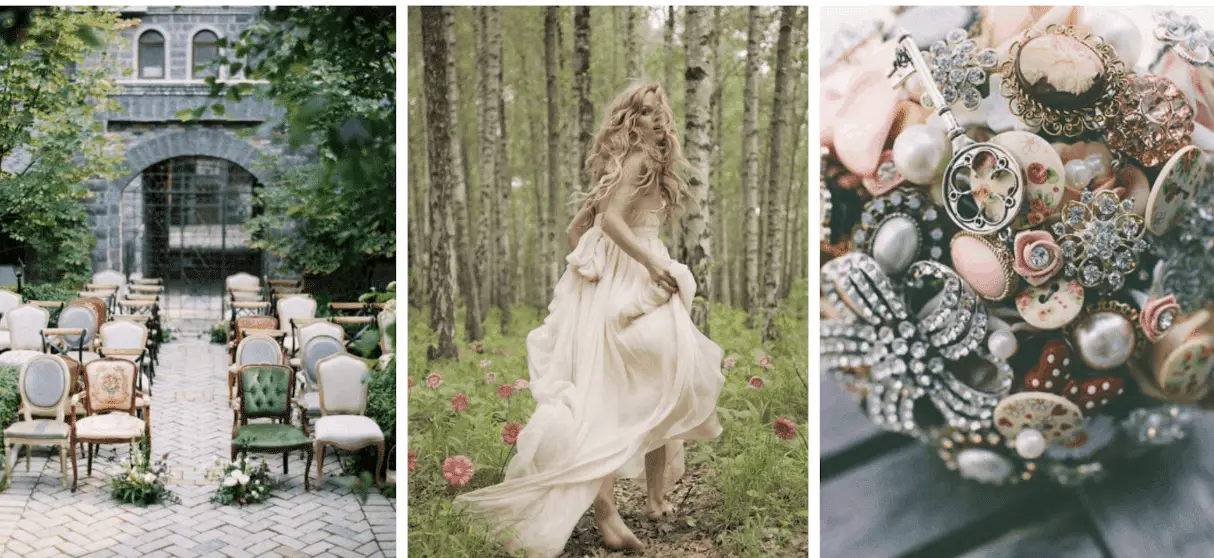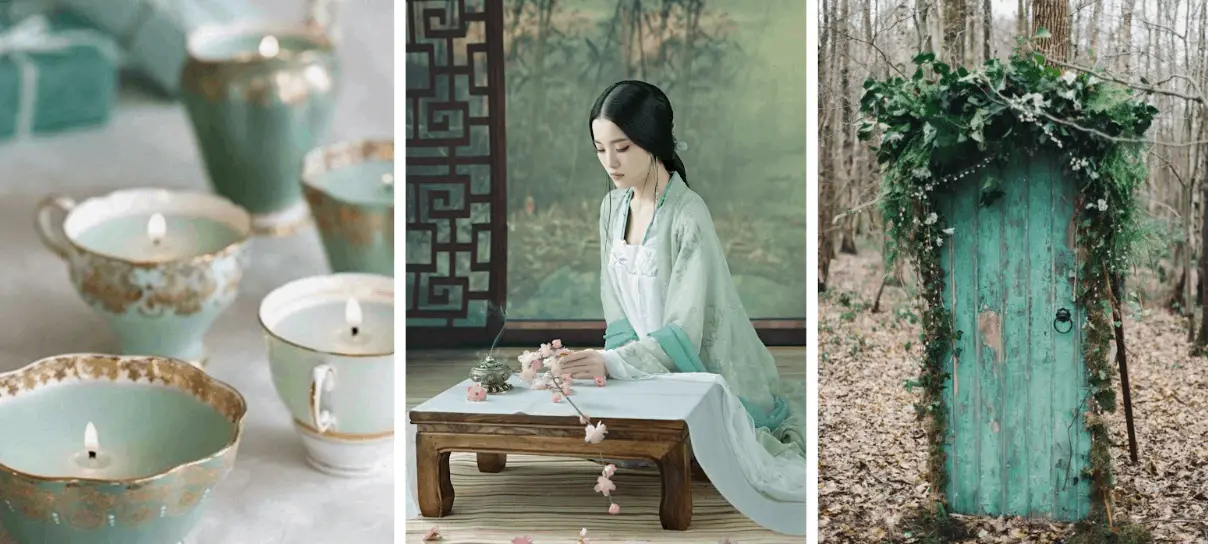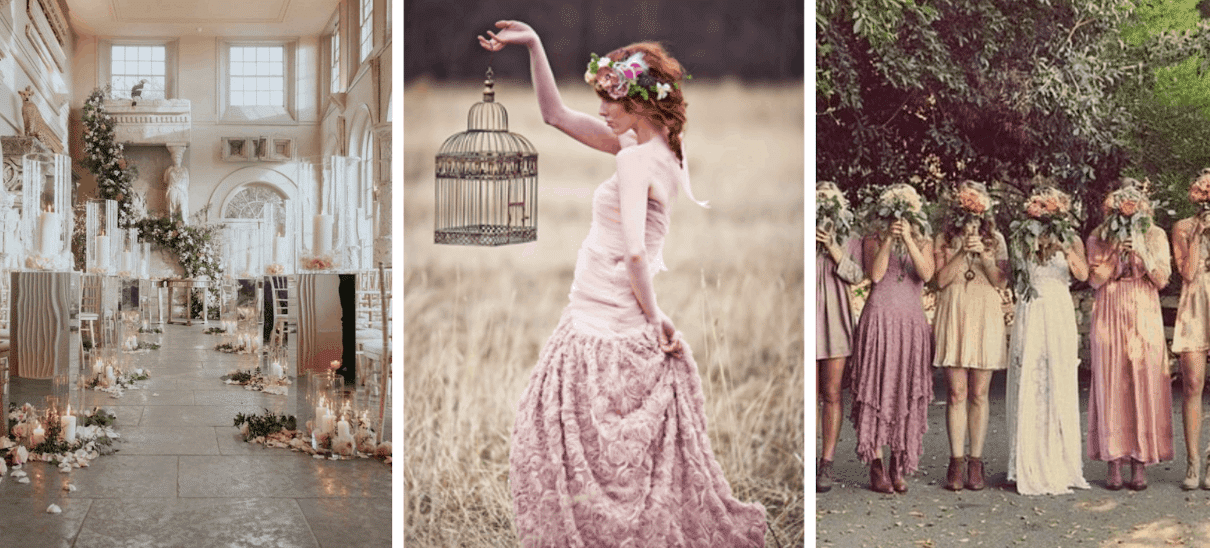Before weddings ever became a struggle for choosing the right dress, perfect flower arrangements, and table settlements, they were a ceremony. Every part of it had a symbolic meaning, all from wedding vows to white gowns.
Have you ever thought about this ceremony in regards to seasonal rituals? Every season has its own symbolic potential and your wedding style should be there to bring it out. So what when it comes to spring?
Symbols of Spring
Spring is by nature the time for weddings, as it symbolically represents one cycle ending and the new one beginning. It calls for fresh air, flourishing, rebirth and the awakening of love. It signifies something purifying, sincere, genuine, innocent.
When considering a spring wedding, you should opt for bright, natural colors and light materials. Also, more natural hairstyles and make-up are preferred as those bring out a fresher and more youthful look. Anything heavy will make you look more tired and laden.

Chic
Styles such as boho and shabby chic have become a trend in recent years precisely because of their natural and youthful appeal. Also, there is simplicity and playfulness to them that gives off that fresh and carefree air.
This style is all about effortless, somewhat messy hairdos ornated with flowers. All pastel color palettes can come into consideration, but rose gold proved to be the most popular among them in the past year. Don’t go heavy on jewelry, just simple pearls here and there, like dew on a cobweb. The closer to nature the better, as this is the style most inspired by mother nature.
Fairytale
The previous style is fairy-like, but this one is about experiencing a classical fairytale wedding. When all the trials and tribulations come to an end, the prince recognizes and marries the princess to symbolically end one cycle of life and begin the “happily ever after”.
Springtime is precisely the season that follows the fairytale narrative – the new beginning. It’s about white gowns, veils, silken gloves, swan lakes, and tiaras. Remember that this is supposed to bring out the noble and refined in you, so consider silken materials paired with translucent fabrics and avoid makeup that distracts from the eyes. Young couples should invite the whole kingdom to witness and even consider planning weddings at their chateau.

Zen
This actually refers to a Japanese themed wedding. Here are a couple of reasons you should really consider this unusual choice as your springtime option. Calling this style Zen means focusing and cultivating mindfulness rather than just enacting a ceremony. It calls for privacy and intimacy, calm and gentle atmosphere.
Spring is the time of the famous cherry blossom or sakura. Think of setting the wedding under the sakura tree, as it is done in traditions of hanami. Opt for pearl white, pink and aquamarine combinations. Tidy hairdo with contrasting makeup such as rosy lips and cheeks, white complexion, black mascara is preferred as it expresses clarity in simplicity. If not alone, couples think of having only the circle of their closest around them.
Antique
There’s something about ancient Greek aesthetics that speaks harmony, simplicity, eternity and perfection. Also, many rituals and ceremonies spring from this classical culture. What you don’t consider is that ancient Greeks were also greatly obsessed with the theme of love and beauty.
Get inspired by the color schemes and materials that resemble the eternal beauty of ancient Greek temples such as white marble, ivory, and gold. Go for the gowns designed as simple toga draperies ornated with delicate golden girdles accentuating the waistline and feminine features. Instead of makeup, experiment with oils and perfumes. This creates a good combination of both eternal and sensual, simplicity and richness cultivated by ancient Greeks.

There are plenty of possibilities, from minimalism to extravaganza that still celebrate spring, in their own way. It is just the question of what power you wish to call upon when having your wedding in spring. Is it the celebration of nature and youth, the transformation, the intimacy or sensuality? Decide the meaning of this ceremony first and the right aesthetics will follow.
